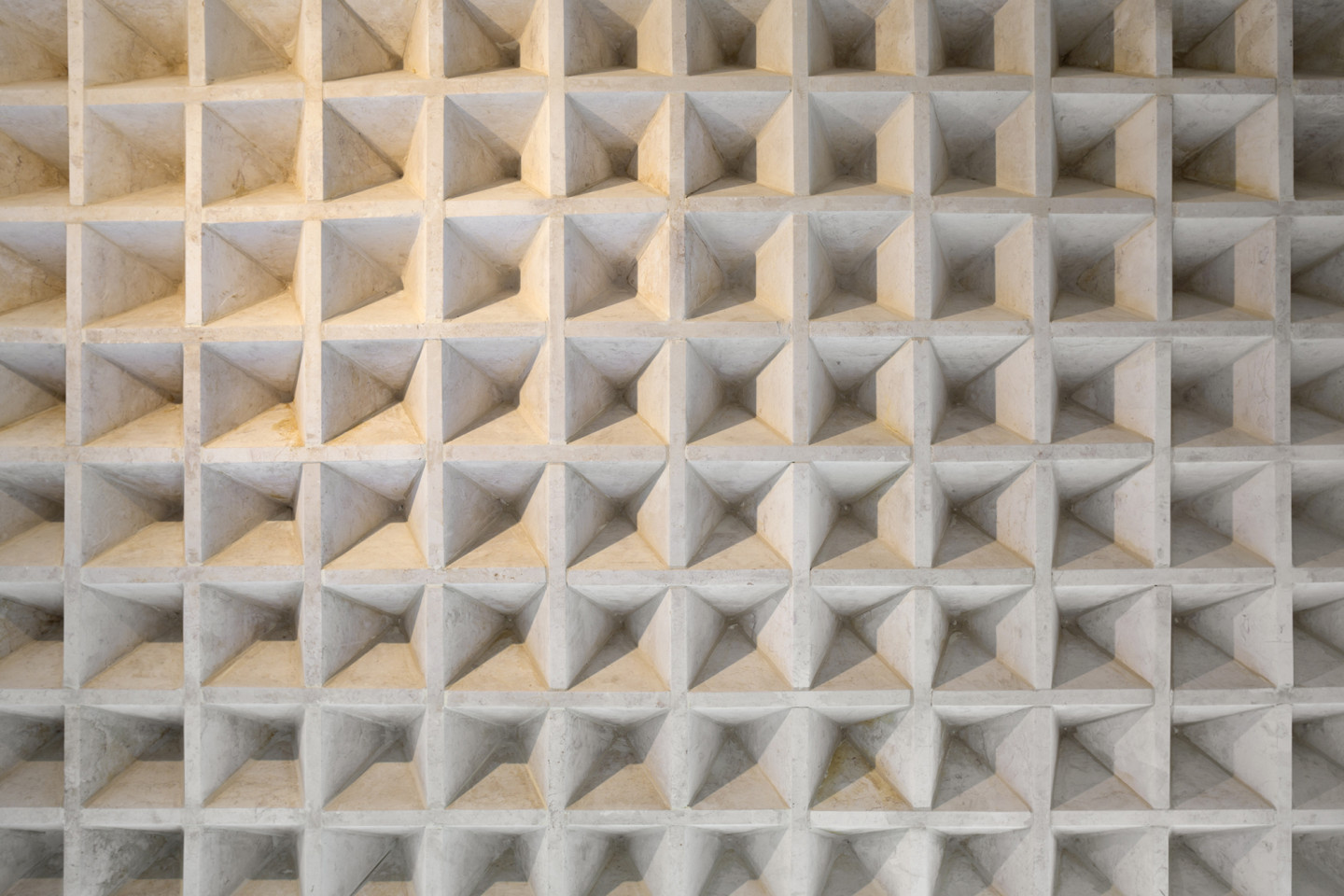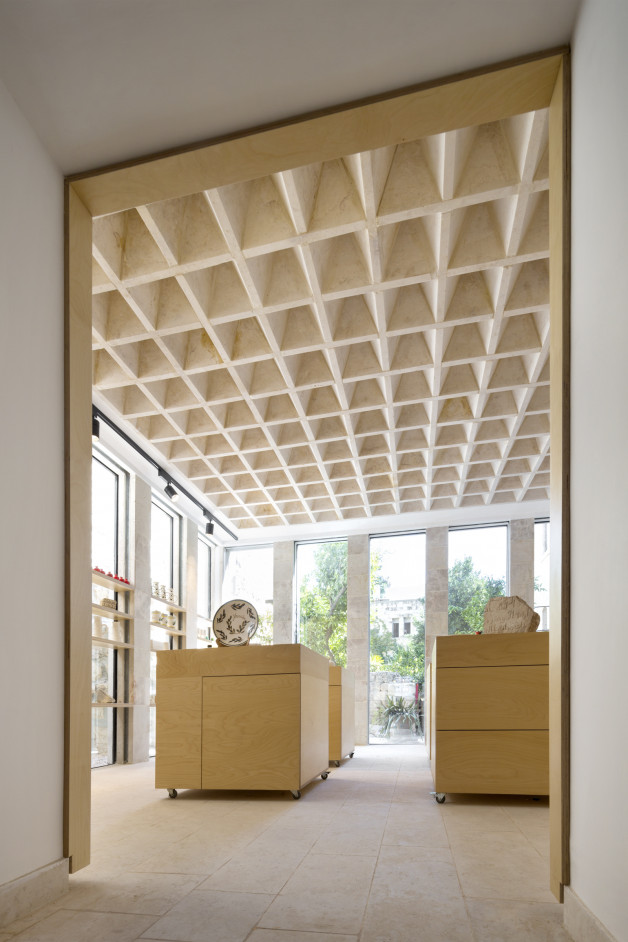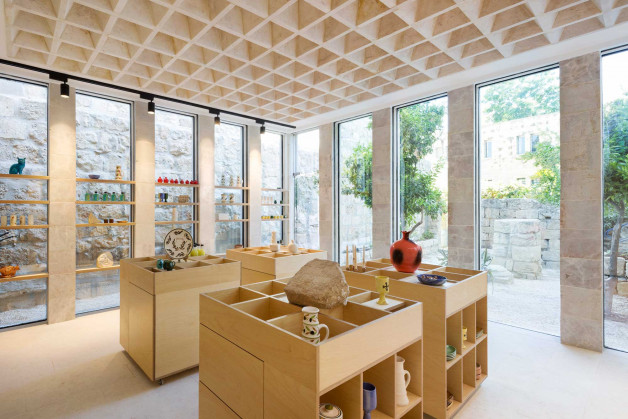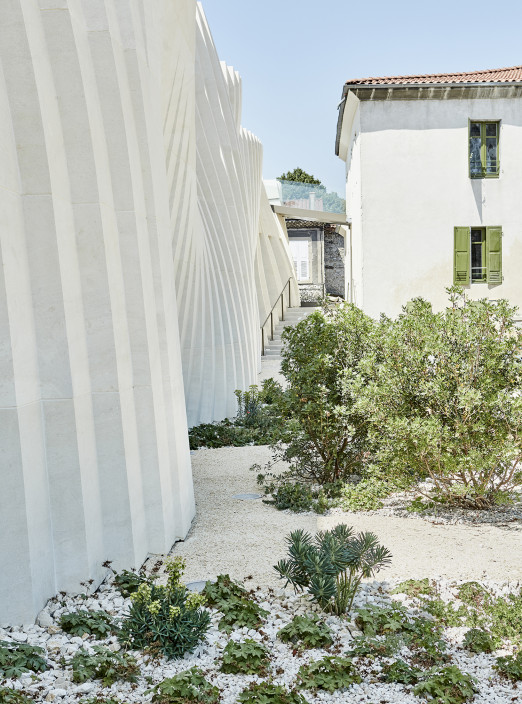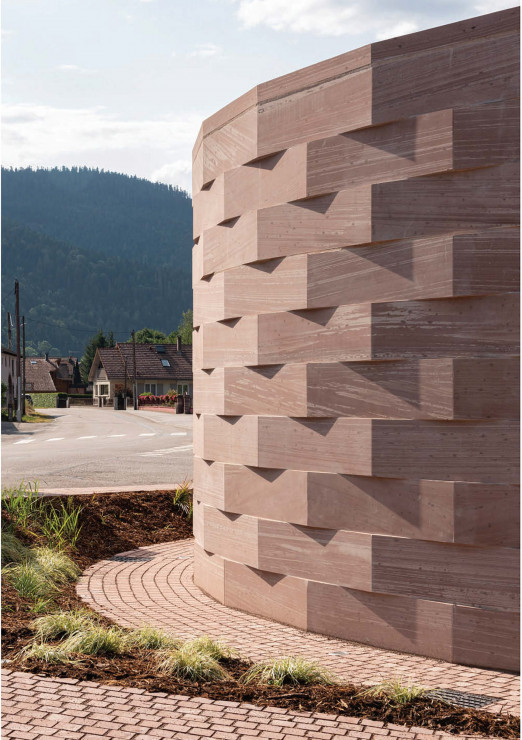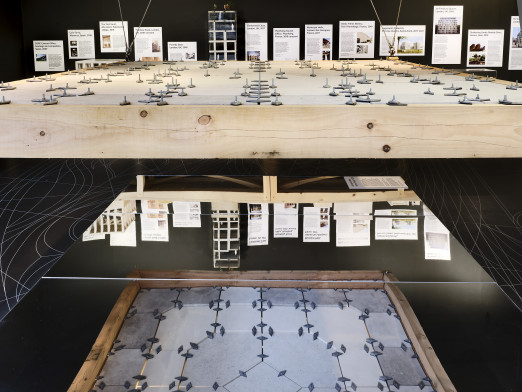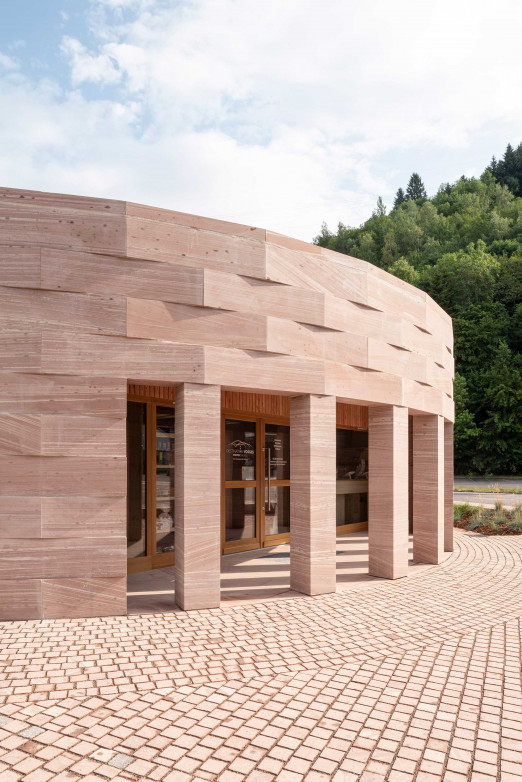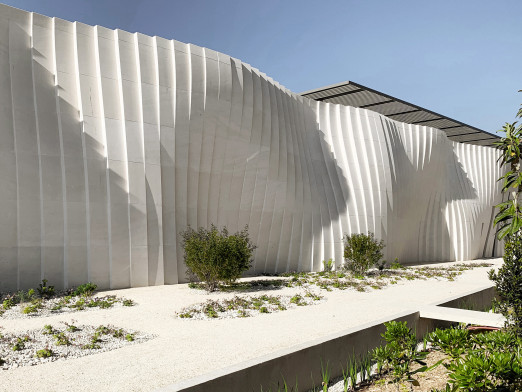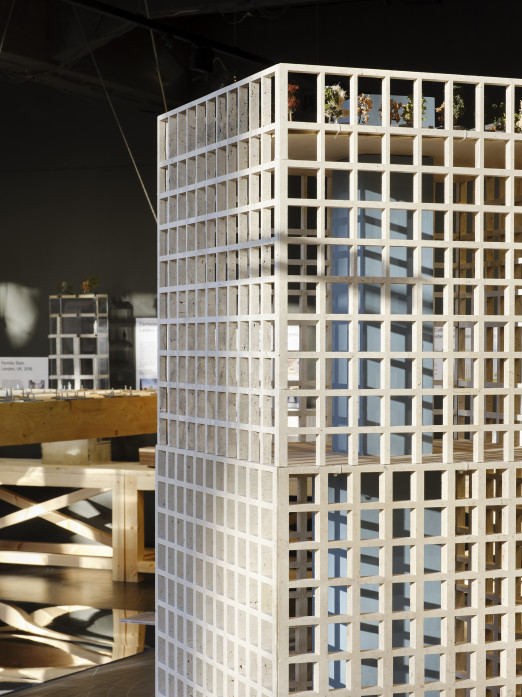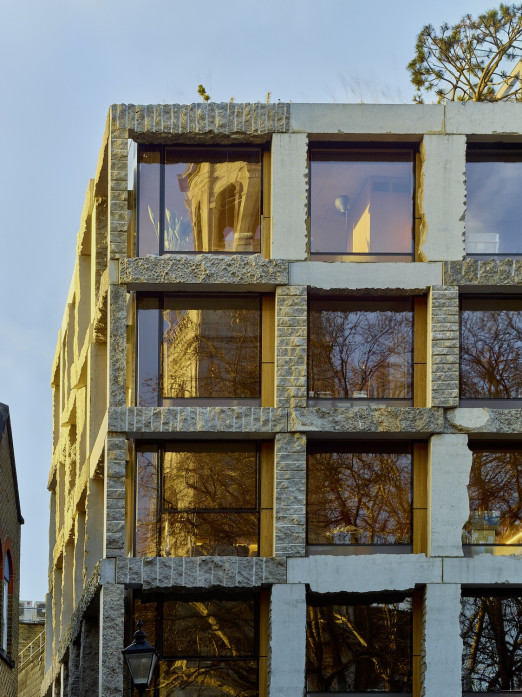The flat stone vault by AAU ANASTAS is an extension to the St Mary of the Resurrection Abbey, a monastery built by the Crusaders in the 12th century, in the Palestinian village Abu Gosh. Completed in 2018 as part of a new shop for the monastery, the vault’s construction technique echoes that of the crusader’s architecture in Palestine; a combination of different architectural elements brought from abroad and found locally.
Like most of the architecture of the monastery, the soundness of the structure relies on a delicate work of stereotomy – the process of cutting stones. The new ceiling is a flat stone vault composed of 169 interlocking ‘voussoirs’ (wedge-shaped stone) positioned on massive stone columns. This was inspired by the invention of French engineer Joseph Abeille (1673-1756), who patented a special weaving system that allowed the building of flat vaults in 1699.
The innovative construction principle literally weaves stones together to achieve the first reinforced flat stone vault of such a scale. The techniques used for the construction rely on novel design and simulation techniques of the vault’s structural behaviour, as well as on fabrication and mounting methods allowing for the assembly of precise topological interlocking.
AAU ANASTAS is formed of the architect and engineering duo Elias and Yousef Anastas, based in Bethlehem, Palestine. They have identified a misuse of stone in architecture in Palestine – whereas it used to be an abundant structural material it is now predominantly used for surface cladding, resulting in a loss of building knowledge and expertise.
In order to readdress this, the practice undertakes research that aims to reinstate stereotomy in contemporary architecture. ANASTAS present a 'modern stone construction technique as part of a local and global architectural language.’
The Flat Vault is exhibited in the New Stone Age, an exhibition and associated public programme curated by the Building Centre exhibitions team with Amin Taha + Groupwork, Steve Webb and Pierre Bidaud. Supported by the Built Environment Trust.
We would like to thank our headline sponsors Polycor and The Stonemasonry Company Ltd.
